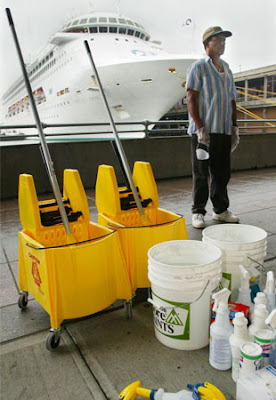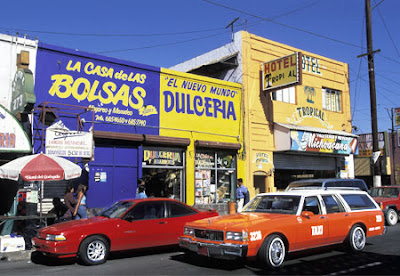Plane Crash
When you’re contemplating a vacation, some travel scenarios are riskier than others. In April, the National Transportation Safety Board announced that no fatalities occurred on U.S. airlines or commuter airlines in 2010. Statistically speaking, flying on commercial airlines remains relatively safe. Furthermore, according to the National Safety Council, flying on a scheduled airline in the U.S. is safer than taking a railroad passenger train — including Amtrak — bus or car. But if flying still gives you the willies, consider taking a fear-of-flying class or research a fear-of-flying clinic in your area.Shark Attack
Thanks to films like “Jaws” and the Discovery Channel’s “Shark Week,” it might have something to do with large toothy fish in the sea. But consider the statistics. “In reality, only one person on average is killed annually in the United States by sharks,” said Stephen P. Leatherman, director of the Laboratory for Coastal Research at Florida International University in Miami. That pales in comparison to the 100 or more people who drown and tens of thousands of swimmers who struggle in deadly rip currents every year. “Clearly, rips are the real killers,” Leatherman said. “Yet most people do not even think about rip currents, much less fear their power or even know how to recognize them.” Read on for more stats on rip currents.Rip Currents
Rip currents are powerful, narrow channels of water moving in an offshore direction. They can occur along any coastline with breaking waves, but are prevalent along most U.S. coastlines. A rip current pulls swimmers away from the shore into deeper water at speeds of up to 8 feet per second — faster than an Olympic swimmer. They can sweep even the strongest swimmer out to sea, and thus are dangerous to all swimmers. Rip currents account for more than 80 percent of rescues performed by surf beach lifeguards, according to the Centers for Disease Control and Prevention. The United States Lifesaving Association estimates that more than 100 people die each year due to rip currents on U.S. beaches.Pirate Attack
Do you hesitate to go on a cruise or sailing vacation for fear of a pirate attack? Certainly, deadly pirate attacks have been in the news. In February, pirates killed four U.S. citizens who were piloting a sailboat several hundred miles south of Oman. The International Maritime Bureau reported that piracy at sea hit an all-time high in the first three months of 2011; pirates murdered seven crew members in that time period. Heart disease killed 616,067 people in the United States in 2007, and cancer killed 562,875, according to the CDC. Perhaps it makes more sense to lie awake at night worrying about diet and exercise rather than a pirate attack.Catching Norovirus
Noroviruses are a group of viruses, previously known as Norwalk-like viruses, that can affect the stomach and intestines. In the United States, the CDC estimates that more than 21 million cases of acute gastroenteritis each year are due to norovirus infection. That means about one in every 15 Americans becomes sick with norovirus each year. Norovirus is also estimated to cause more than 70,000 hospitalizations and more than 500 deaths annually in the United States. The CDC lists three reasons:1. Health officials track illness on cruise ships, so outbreaks are found and reported more quickly on a cruise ship than on land. 2. Close living quarters may increase the amount of group contact. 3. New-passenger arrivals may bring the virus to other passengers and crew.
How can you prevent getting norovirus, Wash your hands often, avoid shaking hands during outbreaks, and use alcohol-based hand sanitizer. Cruise ships have plenty of sanitizer stations these days. It’s a good idea to use them.
Murdered in Mexico
Last year, 111 U.S. citizens were reported to the U.S. State Department as having been murdered in Mexico. Meanwhile, millions of U.S. citizens safely visit Mexico each year. While the odds are small that you’ll die from foul play in Mexico, you can take action to avoid drug-related violence while traveling there. The State Department’s website recommends avoiding the U.S. Mexico border. “You should be especially aware of safety and security concerns when visiting the northern border states of Northern Baja California, Sonora, Chihuahua, Nuevo Leon and Tamaulipas.” Learn more by reading the department's travel warning for Mexico.Hurricanes
The National Weather Service reports there were no fatalities from tropical storms or hurricanes in the United States in 2010. In 2005, Hurricane Katrina killed 1,836 people. When you average hurricane fatalities over the period from 2001 to 2010, the average is 116 deaths per year. Knowing that, will you change your vacation plans? Perhaps not, but it may interest you to know that 40 percent of all U.S. hurricanes hit Florida. See how many hurricanes have hit your state.Tornadoes
The National Weather Service reports there were 45 deaths from tornadoes in the United States for all of 2010. However, 2011 is already shaping up to be the sixth-deadliest tornado year in U.S. history, according to the National Oceanic and Atmospheric Administration, with 536 tornado-related deaths so far, including 151 in Joplin, Mo. See where tornadoes touched down in May, typically the most active month for tornadoes in the United States.Earthquakes
The National Safety Council’s report “Injury Facts 2011 Edition” says the lifetime odds of someone in the United States dying in an earthquake or other earth movement is one in 148,756. For perspective, the lifetime odds of dying from heart disease are one in six, dying from cancer is one in seven, and dying in a motor-vehicle accident is one in 88. Even being struck by lightning is a more likely scenario, where the odds are one in 84,079. Check the USGS website, Top Earthquake States.What about the rest of the world? The 9.0 earthquake that hit Japan in March 2011 was one of the five most powerful earthquakes in the world since record-keeping began in 1900. The earthquake and tsunami caused 15,538 deaths.























